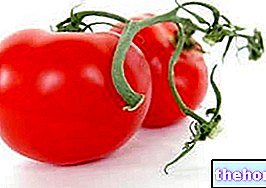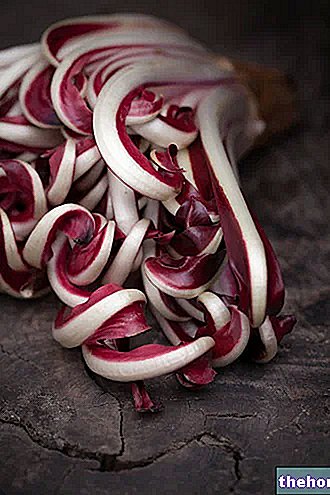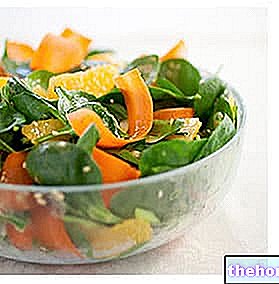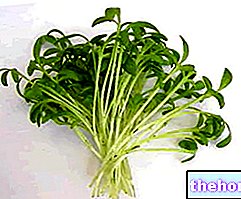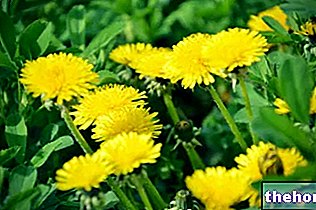What is the Scarola
Escarole (or endive escarole) is a variety of endive (such as the Belgian salad) belonging to the Asteraceae family, Genus Cichorium, Species endivia, variety latifolium; the trinomial nomenclature of the escarole is Cichorium endivia latifolium.

In full development, the escarole grows in height and produces some inflorescences followed by fruits (or achenes); the latter, commonly called escarole seeds, are small, elongated and gray in color. It is possible to transplant the escarole seeds (at 40cm x 30cm distance) also in home organic farming (perhaps developing them first in a seedbed), which is why it is advisable to let at least one plant go "in cannon" (full fruit development). of the previous cultivation.
Nutritional Composition of Endive (GENERIC, referring to escarole and curly endive) - INRAN Food Composition Tables

Nutritional values (per 100 g of edible portion)
Edible part
69,0%
Waterfall
93.0g
Proteins
0.9g
Lipids TOT
0.3g
Saturated fatty acids
- g
Monounsaturated fatty acids
- g
Polyunsaturated fatty acids
- g
Cholesterol
0.0mg
TOT Carbohydrates
2.7g
Starch
0.0g
Soluble sugars
2.7g
Dietary fiber
1.6g
Power
16.0kcal
Sodium
10.0mg
Potassium
380.0mg
Iron
1.7mg
Football
93.0mg
Phosphorus
31.0mg
Thiamine
0.05mg
Riboflavin
0.30mg
Niacin
0.5mg
Vitamin A
213.0µg
C vitamin
35.0mg
Vitamin E
- mg
In the open field, the escarole is sown in the late summer period (July-August) and is ready to be picked in autumn; only where the temperature does not drop dramatically, the collection can extend until the end of winter. The escarole is therefore an autumn-winter vegetable, excellent for meeting the vitamin and salt needs in the period in which most of the vegetables are NO longer available.
Escarole in the kitchen
The best way to consume escarole is raw "in salads"; in this way, with the "live" food, the whole vitamin and saline pool remains unchanged, all to the advantage of reaching the recommended rations.
There is no shortage of cooked dishes based on escarole. The salad leaves can be sautéed, braised or boiled. Moreover, the escarole can be used as a filling for rolled roasts, rolls, fried or sautéed meatballs, special breads, stuffed pasta and baked pasta.
Nutritional properties
The energy supply of the escarole is very low; it mainly contains simple carbohydrates (fructose), very few lipids (unsaturated) and as many proteins (with low biological value).
Escarole is considered a vegetable belonging to the VI and VII food group (since it contains both pro-vitamin A and vitamin C) and its consumption is also useful for increasing the water intake, potassium intake and the intake of dietary fiber.
If compared to those of most foods of the same category, the concentrations of iron, calcium and riboflavin are excellent.
Escarole is a useful food in the modulation of intestinal peristalsis and in the prevention of constipation. With its excellent supply of water and minerals, it is ideal for sports nutrition. Moreover, having an excellent satiating capacity (fiber + water) it is almost omnipresent in the low-calorie diet for weight loss. It is also necessary to underline that the content of dietary fiber - associated with phytosterols, phenolic substances, vitamins, polyunsaturated fatty acids and potassium - is useful in the diet of those suffering from metabolic diseases and / or presenting a cardiovascular risk. higher than normal (hypercholesterolemia, type 2 diabetes mellitus, hypertension, metabolic syndrome, etc.).
Other Foods - Vegetables Garlic Agretti Asparagus Basil Beets Borage Broccoli Capers Artichokes Carrots Catalonia Brussels sprouts Cauliflower Cabbage and Savoy cabbage Red cabbage Cucumber Chicory Turnip greens Onion Sauerkraut Watercress Edamame Chives Chanterelles Flour Cassava Flowers Pumpkin Flour Edible Flowers Pumpkin Seasonal Fruits and Vegetables Endive Salads and Salads Strengthening Salad Lettuce Aubergines Vegetables Nettle Pak-Choi Parsnip Potatoes American Potato Peppers Pinzimonio Tomatoes Leeks Parsley Radicchio Turnips Red Turnips Radishes Rocket Shallots Endive Celery Celeriac Seeds Sprouted Spinach Truffle Valianamberi or Jerusalem artichoke laxatives Saffron Pumpkin Zucchini Vegetables - Nutritional properties OTHER VEGETABLE ITEMS Categories Food Alcoholics Meat Cereals and derivatives Sweeteners Sweets Offal Fruit Dried fruit Milk and derivatives Legumes Oils and fats Fish and fishery products Cold cuts S pezie Vegetables Health recipes Appetizers Bread, Pizza and Brioche First courses Second courses Vegetables and Salads Sweets and Desserts Ice creams and sorbets Syrups, liqueurs and grappa Basic preparations ---- In the kitchen with leftovers Carnival recipes Christmas recipes Light diet recipes Women's Day, Mum, Dad Recipes Functional Recipes International Recipes Easter Recipes Recipes for Celiacs Recipes for Diabetics Recipes for Holidays Recipes for Valentine's Day Recipes for Vegetarians Protein Recipes Regional Recipes Vegan Recipes

